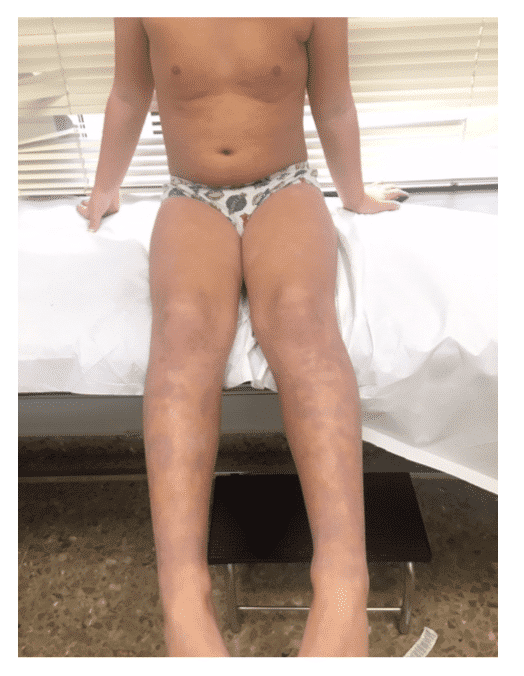
Pigmented Pururic Dermatosis, a Case in Primary Care
Background: Pigmented purpuric dermatoses (PPD) are an heterogeneous group of dermatoses characterized by petechia and hyperpigmented macules and histologically by capillaritis, erythrocyte extravasation and hemosiderin deposition. Vasculitis is not present. Although it is most commonly seen in adults, this disease can also affect children.
Objective: We report on a male infant with progressive purpura who underwent laboratory tests to rule out a systemic disease. Based on the laboratory findings and clinical course, the diagnosis of Schamberg`s purpura was established.
Methods: Case reports
Results: A 7 years-old male consulted to us at primary care because of a purpuric rash that had started on the extremities 5 months prior to presentation. On physical examination the patient appeared as a well-developed healthy infant. He had a patchy, poorly demarcated light-purple to reddish hyperpigmentation over the trunk and the extremities.
No associated disease, significant drug exposure, or contact allergens were found.
Routine laboratory test including coagulation were all normal. Punch skin biopsy revealed perivascular mononuclear infiltrates with extravasated erythrocytes and few hemosiderin deposits in the upper dermis without apparent damage to vessel walls.
The clinical and laboratory findings in our patient suggested the diagnosis of chronic pigmented purpuric dermatosis (Schamberg`s purpura).

Conclustion: The presented case demonstrates a rare cause of purpura in infancy. PPD in children are idiopathic and chronic eruptions. The patient`s history and routine laboratory tests allow to make a differential diagnosis with thrombocytopenia, coagulopathy, vasculitis, drugs or traumatic purpura. Recently, successful treatment with griseofulvin, pentoxifylline, and with PUVA have been reported in few patients. In view of the benign nature of the pigmented purpuras, the patients can benefit from watchful waiting.
Powered by Eventact EMS